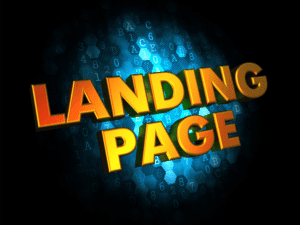As a content writer in the dental industry, I get to see a ton of dental website content. While some of it ticks all the boxes you want great dental content to be, others fall flat at the first hurdle.
In some cases, not only does it fall flat, but it also breaches national advertising regulations which can end up costing you a small fortune.
So, with this in mind, we’re going to discuss 3 costly dental content writing mistakes you should avoid but also, what you can do or say instead.
So let’s dive in…
#1 – Non-compliant copy

Did you know that dentistry is one of the most heavily regulated industries when it comes to advertising?
There’s a whole bunch of things you can’t say if you don’t want to fall foul of national and regional advertising and marketing laws.
As a result, it can be tricky to highlight the benefits of a practice or treatment when the rules state that you can’t imply being ‘the best’ or that you’re even ‘different’ from your competitors.
Yet, the number of dental websites I see with headlines that say stuff like:
- The Best Dentist in London or
- The Best Dental Experience You’ll Ever Have
…is extraordinary.
Of course, ad copy is meant to be persuasive. So, as copywriters, we tend to use a whole bunch of superlatives that are woven into the text to encourage people to take a specific action.
That’s how copywriting usually works!
But in dentistry, standard rules go out the window because we need to ensure that any written statements are both true and verifiable.
When they aren’t, they go against the ethics of many of the world’s governing dental bodies including:
- the UK’s GDC,
- the ADA in the US, and
- Australia’s AHPRA.
Moreover, not only do statements like “the best” breach most advertising and marketing guidelines but practices could also be fined a substantial amount of money – often running into tens of thousands of pounds or dollars if they are found guilty.
So, what can you say instead?
Here are some examples of copy that evoke those same feelings of great dentistry and exceptional services, but this time, they’re written in such a way that no longer breaks non-compliance laws for advertising.
Statements like:
- Outstanding Dental Care In The Heart Of London, or
- A Quality Experience From A Team Who Puts Patients First
Even though we’re essentially saying the same thing, note the subtle word changes. Now, these headlines no longer imply that this clinic is “better than” other clinics in the area. Instead, we’re simply stating that patients who visit get an outstanding service from people who care.
That’s the key difference!
#2 – Expectation vs Reality

Another aspect of poor dental website content, and one that can cost you dearly, is through intimated statements of ‘expectation’ rather than ‘reality’.
So what does that mean, exactly?
It’s all too easy when we compose copy to get caught up in statements that might project a perceived or false reality (in this case, the expectation) rather than the actual reality.
As a prime example, and I see this a lot, you can’t imply that “dental implants last a lifetime.”
Life-lasting implants may be what a reader wants to hear or ‘expects’. But this isn’t the ‘reality.’ In fact, it isn’t even the norm. Therefore, this statement is ambiguous at best and completely misleading at worst.
Likewise, if I were to mention that “Porcelain veneers are as permanent as natural teeth” and a reader likes what they hear and signs up for treatment, they may be under the ‘perceived’ impression that it’s a one-time-only process. Then, when they find out that veneers have a shelf life of 10-15 years on average, they might understandably, feel misled.
Again, the expectation that veneers are as permanent as natural teeth vs the reality that they typically last 10-15 years is commonly shared throughout dental website content.
So, what can we do to prevent quoting expectative content?
Always err on the side of caution. For example, you could say that “Dental implants last several decades on average” as this wouldn’t be an untruth. You could even back it up using trusted data like this.
Likewise, you could say that “Porcelain veneers are as strong as natural teeth under normal chewing conditions, but they do have a shelf life of 10-15 years”. Again, you could back it up with scientific data like this.
Once more, subtle word changes can make all the difference between dental website content that abides by advertising guidelines and content that contravenes them.
#3 – Demeaning the industry

The final point I wanted to make is that content that demeans the dental profession in any way is unacceptable. This is something that practically all Dental Association Regulations agree on.
So what do I mean by this?
Let’s say you want a piece of content written about oral extractions and you came up with the headline:
“Tooth Pulling Our Speciality – At Least It Won’t Hurt Your Wallet!”
Okay, so this is somewhat tongue in cheek I know, but this attention-grabbing headline is likely to turn heads for all the wrong reasons.
Inevitably, it’s only going to end up one way – costing the dental clinic dearly because this statement makes a mockery of the process of oral extraction, not to mention the skill and patient care that goes into it. But also, it implies that teeth extraction is a cheap backstreet service and one that shines a bad light on the dental industry.
Here’s another example:
Let’s say that your dental website requires a call to action and you come up with this headline:
“Need Drilling? Let Our Dentist Fill You Today!”
Of course, this has been written to overemphasize the point but there are a couple of huge red flags with this.
Even if you get past the not-so-subtle sexual references and disregard the cringe-worthy connotations, this headline doesn’t say much, other than you carry out fillings. While general dental practices do indeed carry out fillings, they also do so much more than that.
Essentially, this headline is demeaning to the practice in question, but it also paints the dentist in a bad light while degrading the industry as a whole. You could say it’s a triple blow and one that you should avoid at all costs.
So how should you approach dental content while not painting the industry in a bad light?
Put yourself in the reader’s shoes. Consider asking how this content looks to someone who has just come across it. Does it show the clinician, their practice and the dental industry in a good light?
If not, or if you have any doubts at all, don’t say it. Simple!
So, there you have it, 3 costly mistakes you need to avoid when writing dental website content.
If you need any further information on how to write ethical dental copy, then check out the Dental Writers blog where I have a ton of useful information on all aspects of dental content writing and marketing.
Alternatively, if you’re looking for someone to write content that won’t fall foul of your region’s dental advertising standards, get in touch with the team at Dental Writers.

















